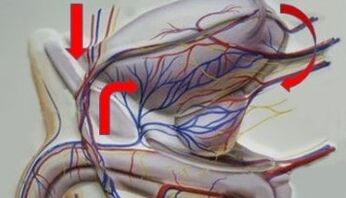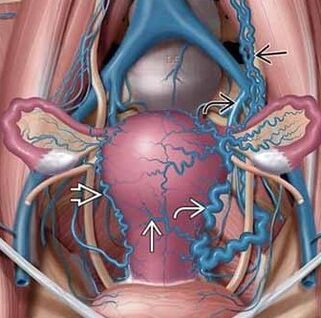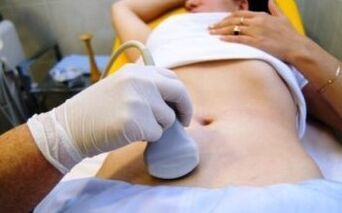Varicose veins of the pelvis (WRMW) or chronic pelvic pelvic syndrome are still an exotic disease with fuzzy diagnostic boundaries for many doctors.
This explains the fact that some doctors "do not notice" this disease for their patients for a long time, while others make this diagnosis for almost every second person suffering from continuous unexplained pain in the lower abdomen.

In the meantime, the quality of the patient's further life, his ability to enjoy the intimate side of relationships with a loved one and the ability to continue his family depends largely on the timely discovery of varicose veins depends largely.
DESCRIPTION OF THE DISEASE, its predominance, statistical data
The phenomenon of chronic pelvic pain has been recognized for doctors for a long time. But only relatively recently it became the most popular reason - pelvic varicose veins. This is a diseaseWas first described in 1975And yet not well studied.
Most likely this pathology will develop according to the following algorithm:

The symptoms of varicose veins (varicose veins) of the pelvic internal organs are much more common in women of reproductive age than in men. At the same time, ovarian ("ovary") veins most commonly suffer - in 85% of cases.
The main symptom is the pain that is recorded in more than 90% of patients. But the prevalence of this disease among the population has not yet been clarified: according to various studies, it is from 6 to 80%. Such a big run in "testimony" is explained only by insufficient qualifications of diagnostic doctors when making a diagnosis.
Causes and risk factors
The causes of pelvic varicose veins are any changes in the body that can provoke the onset of the pathological mechanism of this disease:
High risk factors VRVMT are:
Classification and phases of varicose veins
In the medical environment, the conditional division of VRVMT is accepted by the nature of the course in the varicose veins of curves and external genitals (for example, labia) and venous plethora syndrome.
This classification does not have much practical importance, sinceIn most cases patients have both these formsAt the same time, as the provocation of each other.
You can also find a classification of the disease by the root cause of its appearance. In this regard, VRVMT is divided into:

What is dangerous and if there will be consequences
This type of vascular pathologycannot be called a deadly disease. Discovered in time, gives yourself a good medical correction. But the whole problem is that finding it is not that simple. Inadequate recognition of the disease and the low awareness of most diagnostic doctors play a role in this.
So it turns out that patients have suffered from this disease for years without doubting it. And in their body, meanwhileThere are a number of irreversible changes:
Troubleshooting
According to US researchers, in the early 2000s, only 2% of patients with VRVMT initially made the right diagnosis. Sometimes a consequence of a diagnostic error was to remove the cleaning organs in women, though this can be avoided if they are usedThe most accurate methods for diagnosing varicose veins of the pelvis:

Predictions and preventive measures
Almost almost impossible to fully cure varicose veins of the small pelvis without surgical intervention. With the help of conservative medicineYou can relieve greatly and even eliminate the most unpleasant symptomsAnd significantly reduce the risk of complications of the disease. The surgery also does not provide one hundred percent guarantee that the disease will not return.
To prevent a recovery of the diseaseIt is always necessary to adhere to a "anti -variable" lifestyle:
Varicose veins of the pelvis -This is a hidden scam of women's health, a kind of ghost disease, which is difficult to find, but suffer from it is quite true.
The main symptom of the disease is a chronic pelvic pain that can torment the patient for a long time and become a source of abandonment of many joys of life. You can't stand such discomfort and you can't see a doctor!
When specific symptoms appear, you should clearly understand that it is abnormal and immediately seek help from a specialist.

Basic therapy
In an issue such as treatment of pelvic varicose veins, the basis consists of correcting its food. To begin with, women with VRVMT need to learn that even Detralex will not have proper efficiency unless they refuse to work in harmful production.
If there is such an option, it is best to move on to a lighter job - excluding excessive physical activity, weight lifting.
If you have to sit down or stay for a long period during a working day, adjust yourself 5-minute vacation every half hour. At this time, you can simply walk or lie down, or you can do therapeutic gymnastics.
High quality varicose vein treatment is also not possible without changes in diet. From the diet it is necessary to completely remove fat and fried foods, smoked foods and conservation. Use as few citrus fruits as possible, try to use spices less often when cooking.
Add more natural products to your daily menu - fruits and vegetables. Instead of animal fats, use them with vegetables - they contain a large amount of vitamins B E.
With the painful enlargement of the pelvic veins, it is necessary to wear special compression linen. We are talking about sweater or socks that contribute to normalizing blood circulation in the vessel, and also eliminate fluid stagnation in the veins.
In addition to all of the above, women with VRVMT should engage in anti -varicosis methodology daily. Includes the following exercises:
A daily shower will help tonify the veins. Water the area of the buttocks, abdomen and buttocks with aircraft of different temperatures.
Drug therapy
If pelvic vein disease is in the early stages of development, you can try to cope with the help of medication. The rate of damage can be detected by ultrasound (ultrasound examination of the pelvic veins).
Very often, pelvic varicose veins are found during pregnancy. If a woman is born soon, it is necessary to stabilize her condition as soon as possible.
Preventive
Forever get rid of the pelvic varicose veins, without using surgical intervention is almost unrealistic. However, ships never expand themselves, which means problems can be avoided by fixing your lifestyle.
Even after surgery, you will not get an absolute guarantee that the disease will no longer return. Of course, modern conservative methods greatly simplify the process of treatment and recovery. You can only avoid relapse if you follow a number of rules:

Folk remedies
To relieve symptoms and accelerate the restoration of the affected veins, the use of traditional medicine means. However, do not use natural medicines without prior consistency with your doctor.
List of effective recipes:
Decoction scheme: the first 2 days - 3 times 50 ml, the next 2 days - 100 ml, in the future, the dose is increased to 150 ml. The duration of therapy is 20 days, after which a break is made for 10 days.
To improve the condition of the blood vessels, it is useful to use blueberries as well as flower pollen daily.
When using folk remedies, it is important to understand that they only meet the main course, so it is undesirable to reject the medication prescribed by a physician.
Regular medical examination is of no small importance, which will allow you to detect any deviation in time and continue in therapy. The sooner the disease is detected, the easier it is to cope with it. Severe cases require prolonged treatment.
Varicose lesions of pelvic veins without pronounced symptoms can be eliminated by conservative methods. They fight with a neglected disease with the help of surgery, even after surgical manipulations, a repeated phenomenon of pathology is possible.
It will be possible to minimize the risk of VRVMT thanks to prevention, which means a healthy lifestyle.

















